Amigurumi #69: Cordero – punto piña / piña point
Quizá exagero (como de costumbre, jaja) pero admito que el punto oveja (punto piña) se me hizo complicado. Cada puntada fue un reto es decir tuve que darle tiempo y avanzar con otros proyectos mientras lo tejía. Me parece que eso es debido a que como tejo amigurumis desde hace un par de años, mis manos se acostumbraron a tejer apretado, tanto así que a veces utilizo un número más de crochet y queda bien (y lo normal sería que quede suelto).
Maybe I'm exaggerating (as usual, haha) but I admit that the sheep stitch (pineapple stitch) got complicated for me. Every stitch was a challenge, that is, I had to give it time and move on to other projects while I was knitting it. I think that's because as I've been knitting amigurumis for a couple of years now, my hands got used to knitting tightly, so much so that sometimes I use an extra number of crochet and it looks good (and it would normally be loose).
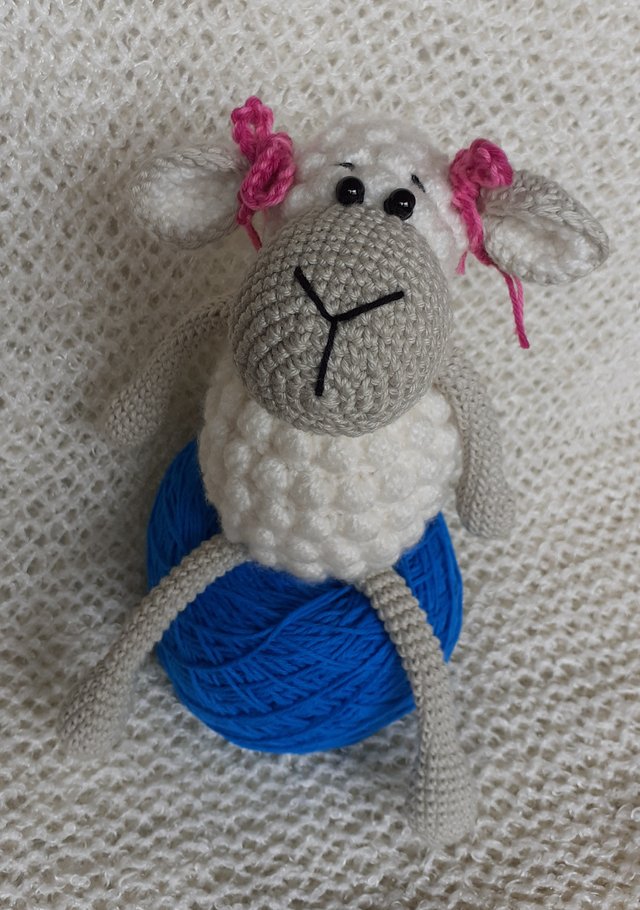
La idea es que al tejer el punto piña (en este caso 3 puntos altos) lo tejo apretado y eso dificulta la última puntada que sería el cierre de cada punto piña. Me parece que quienes tejen ropa (chalecos, chalinas, chompas, blusas, etc) si utilizan ese tipo de punto y por eso no tienen problema, eso es lo que percibo. De todas maneras cada que tejo este amigurumi me saca una sonrisa, y espero que a ustedes también.
The idea is that when knitting the pineapple stitch (in this case 3 high stitches) I knit it tight and that makes it difficult to the last stitch that would be the closing of each pineapple stitch. It seems to me that those who weave clothes (vests, scarves, sweaters, blouses, etc) if they use that type of stitch and therefore have no problem, that is what I perceive. Anyway every time I knit this amigurumi I get a smile, and I hope you do too.
Materiales:
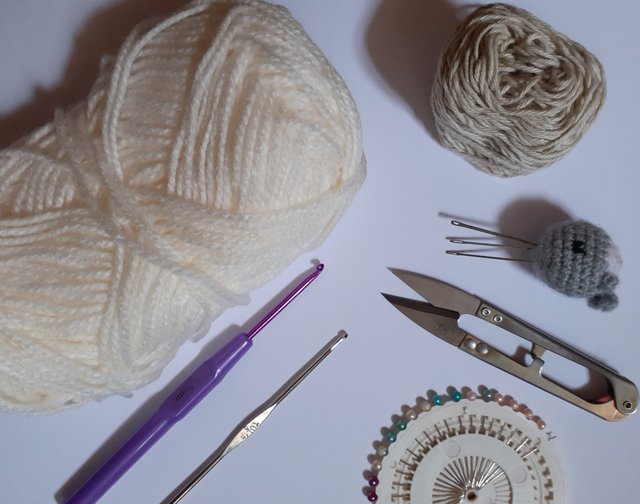
Procedimiento:
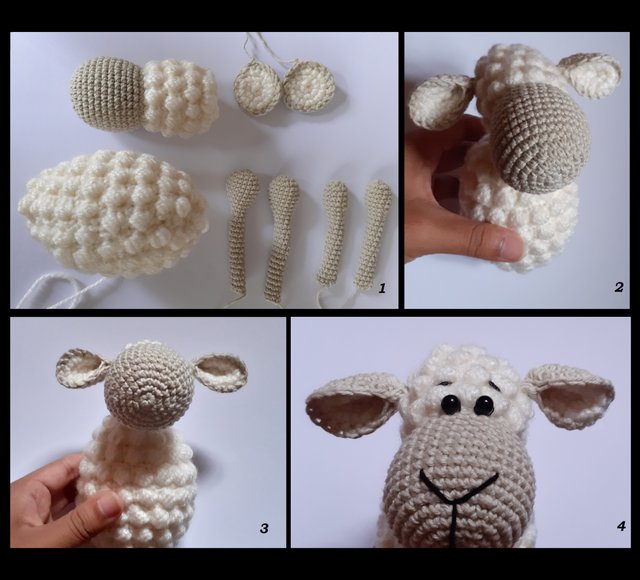
Se tejió todas las partes del amigurumi siguiendo el video tutorial de Bypetus (enlace al final). Solo que al no tener el tipo de lana exacto para el cuerpo y parte de la cabeza, se tejió con el punto piña. Esta vez el cordero adquirió colores reales (figura 1, 2 y 3). Para los ojos se utilizó perlitas negras e hilo de algodón para el bordado de las cejas y hocico (figura 4).
All parts of the amigurumi were woven following the Bypetus video tutorial (link at the end). Only that as it did not have the exact type of wool for the body and part of the head, it was knitted with the pineapple stitch. This time the lamb acquired real colors (figure 1, 2 and 3). For the eyes, black beads and cotton thread were used for the embroidery of the eyebrows and muzzle (figure 4).
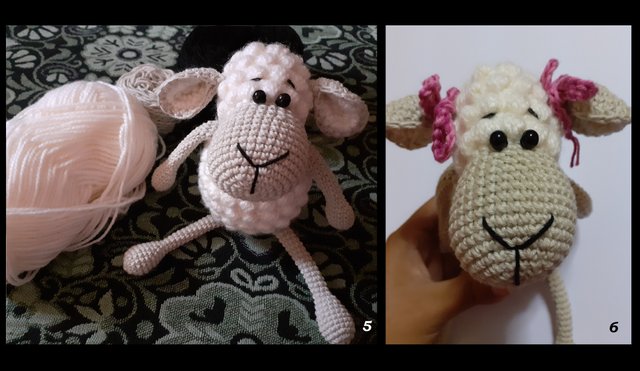
Una vez unido todas las partes del amigurumi (figura 5) se decidió que sea hembra por lo que se agregó unos lacitos rosados (figura 6).
Once all the parts of the amigurumi were joined (figure 5) it was decided that it should be female so some pink bows were added (figure 6).
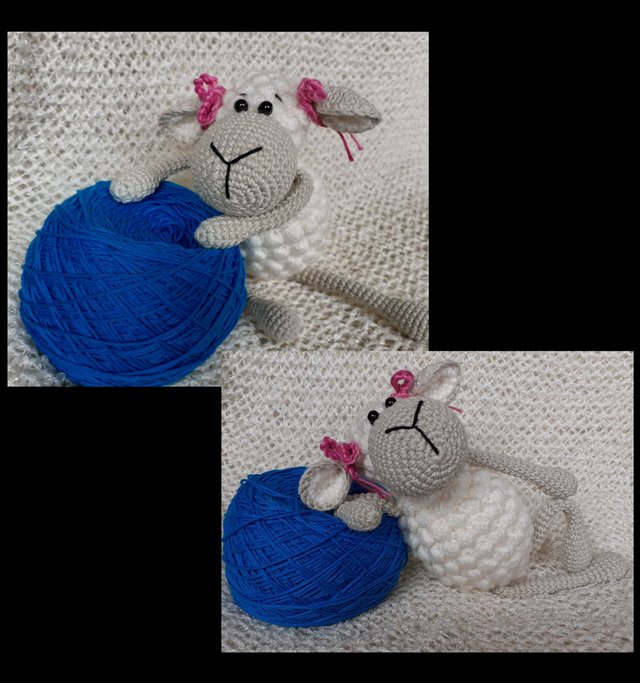
Y listo, tenemos a la corderita.
¡…Hasta la próxima!
...See you next time!
Dato curioso: Mide 14 cm parada y 22cm sentada.
Enlace del video:
►Encuéntranos en:
- Facebook: https://www.facebook.com/iniciartecraft/
- Instagram: https://www.instagram.com/inici_arte_craft/
- Creary: https://creary.net/@diana.waranqa/
Muchas gracias al equipo por el apoyo.
Muchas gracias por el apoyo. El corderito está alegre.